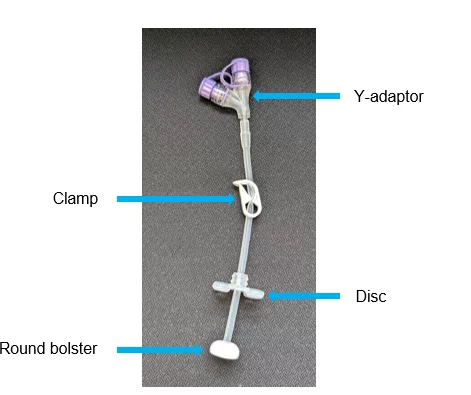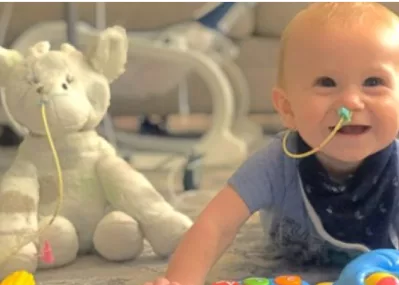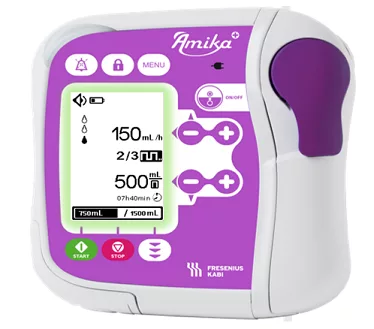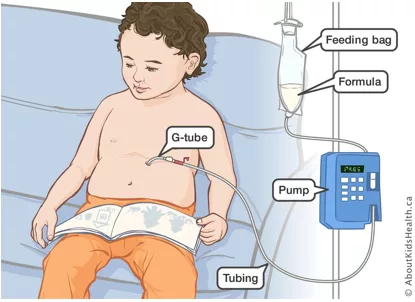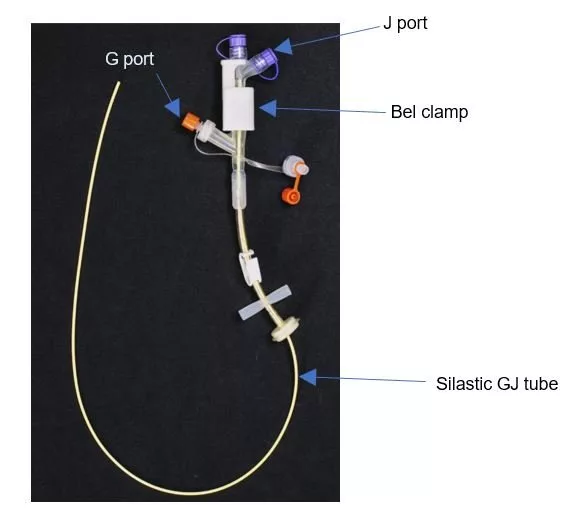SITUATION:
This QuickHit was informed by consults from family caregivers and home care providers who require support with troubleshooting when the pH of gastric aspirate from a nasogastric (NG) tube is greater than 6.
BACKGROUND:
Children with medical complexity may rely on NG tubes to support nutrition, hydration and/or medication administration. With the increasing use of NG tubes in home and community settings, there are important assessments and considerations to ensure safety of children and to prevent complications such as aspiration, tube migration and dislodgement.
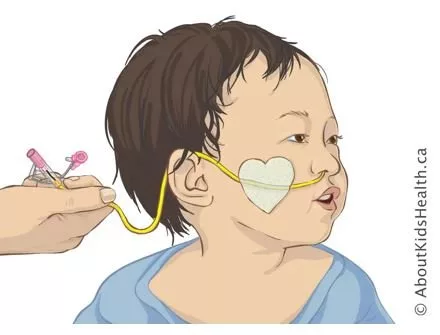
ASSESSMENT:
Placement of the NG tube is confirmed by measuring the pH of gastric aspirate using pH test strips.
NG tube placement is checked:
- Before using the NG tube for feeds, fluids or medications
- When a new NG tube is inserted
- When you are concerned that the NG tube may have come out or moved
- If the child is choking, vomiting, coughing or having trouble breathing
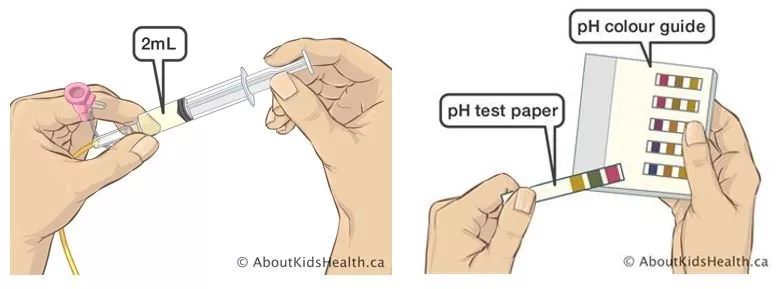
Placement of the NG tube can be confirmed via pH testing of the gastric aspirate by performing the following steps:
- Attach an empty syringe to the adapter on the NG tube and gently flush with 1 to 2 mL air to clear the tube
- Pull back on the plunger to withdraw about 2 mL of stomach contents
- Wet pH testing paper with the stomach contents and compare the colour of the strip with the label on the container
RECOMMENDATION:
Connected Care recommends the following when confirming placement of an NG tube and the pH of the gastric aspirate is greater than 6:
- For majority of children, pH of the gastric aspirate will be less than 5. Some children on acid-suppressing medication, those recently fed, or being continuously fed may have a gastric pH of greater than 6.
- If the child was recently fed or receiving continuous feeds, consider pausing the feed and waiting 15 to 20 minutes to allow for partial digestion and check the pH again.
- Assess the appearance of the gastric aspirate and determine appropriateness to proceed with feeding. Examples of gastric contents are shown in the image below.
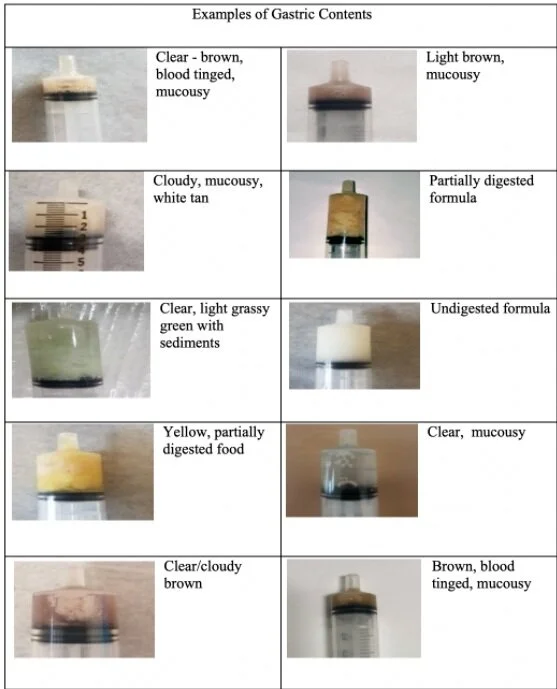
- A pH of greater than 6 may indicate that the NG tube is in the small intestine or lungs. If you are concerned that the NG tube is not in the stomach, remove and re-insert the NG tube.
- Review the AboutKidsHealth article on feeding through an NG tube.


